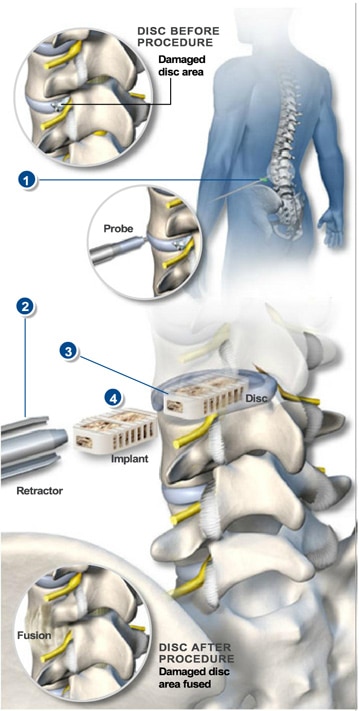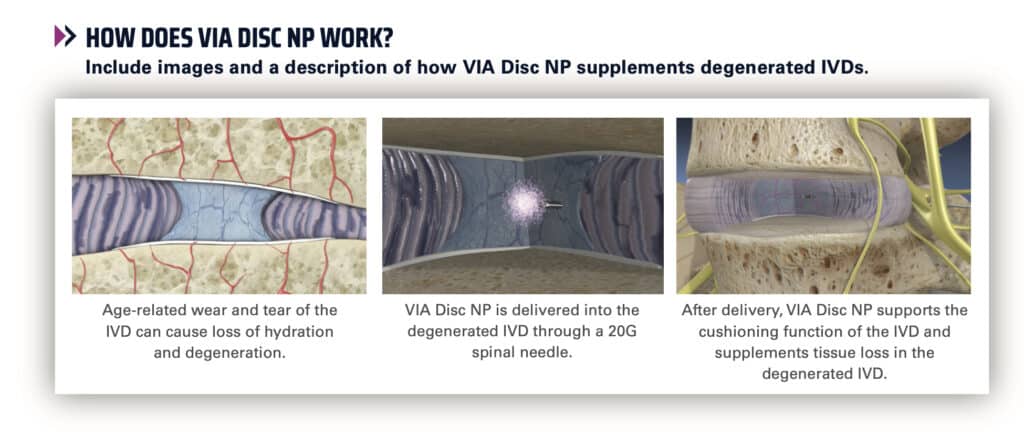XLIF – Lateral Lumbar Interbody Fusion
The XLIF procedure, which stands for eXtreme Lateral Interbody Fusion, is a surgical procedure designed to fuse two vertebrae in your lumbar (low back) spine using a side or lateral approach. Most traditional fusion surgeries access the spine from the front or the back.
The XLIF technique can treat specific types of lumbar spinal disorders, such as degenerative disc disease, spondylolisthesis and scoliosis, as well as some types of recurrent lumbar disc herniation and spinal stenosis. The procedure is not always an option for spinal fusion surgery, as it can’t be used to treat the lowest spine levels.
 OVERVIEW
OVERVIEW
Unlike traditional back surgery, the XLIF procedure allows your surgeon to access your spine through your side. The advantage of this technique is that the surgeon can avoid the major muscles of your back, which reduces the surgical trauma and speeds up your recovery. The XLIF technique can treat back or leg pain caused by degenerative disc disease and other spinal illnesses and injuries. See the top left illustration.
Because it is a minimally invasive procedure, you can have it done on an outpatient basis. After this same day surgery, you can return home to recuperate. The technique is described below. Talk to your spine surgeon at the Southeastern Spine Institute (SSI) about the risks and recovery expectations.
1. ACCESSING YOUR SPINE
The surgeon creates two small incisions in your side. These incisions are much smaller than those used in traditional back surgery. The doctor inserts a probe through one incision, as shown in illustration 1, and the surgical instruments through the other.
2. AVOIDING THE NERVES
Your surgeon uses the probe to stimulate and detect nerves along the side of your spine. When the surgeon finds a nerve, he or she avoids it, leaving it undamaged. The surgeon uses a fluoroscope, which displays live X-ray images, to guide the probe to the proper position.
3. INSERTING THE DILATION TUBES
The physician then slides a series of dilation tubes over the probe to create a larger opening until he or she can insert a retraction device. The surgeon uses the retractor, as shown in illustration 2, to move aside muscle tissue and gain access to your spine.
4. PARTIALLY REMOVING THE DISC
Operating through the channel created by the retractor, your surgeon removes the damaged portion of the disc. Refer to illustration 3.
5. INSERTING THE IMPLANT
To complete the fusion operation, the surgeon inserts an implant filled with bone graft into the empty disc space, as shown in illustration 4. The graft realigns your vertebral bones back to a more normal height. The graft also lifts pressure from any pinched nerve roots. The doctor may also introduce bone morphogenetic protein (BMP) to encourage bone growth and a strong fusion.
6. RECOVERING FROM THE PROCEDURE
The morselized bone graft grows through and around the implant, forming a bone bridge that connects the vertebrae above and below the replaced disc. This solid bone bridge is called a fusion.
As with any spinal fusion surgery, your recovery depends on you. If you have an XLIF procedure, however, some aspects of the recovery are common, as follows:
- You may feel relief from your pain immediately after surgery or it may diminish gradually.
- Pain from the surgery itself is normal and easily controlled with oral medication. As your incision wound heals, the pain subsides.
- You often can walk around the night after your surgery. Your mobility improves quickly.
Contact us today to learn more about the eXtreme Lateral Lumbar Interbody Fusion procedure.
SURGICAL PROCEDURES

